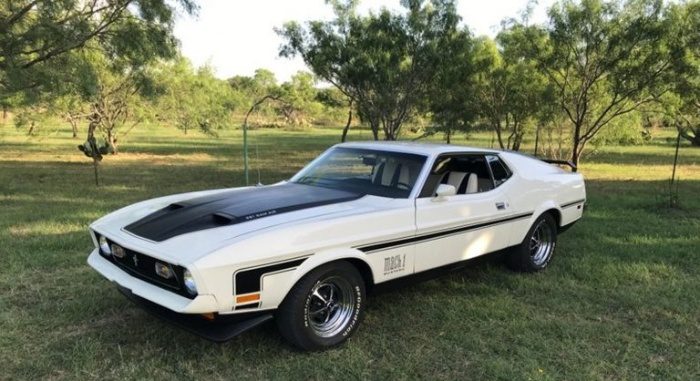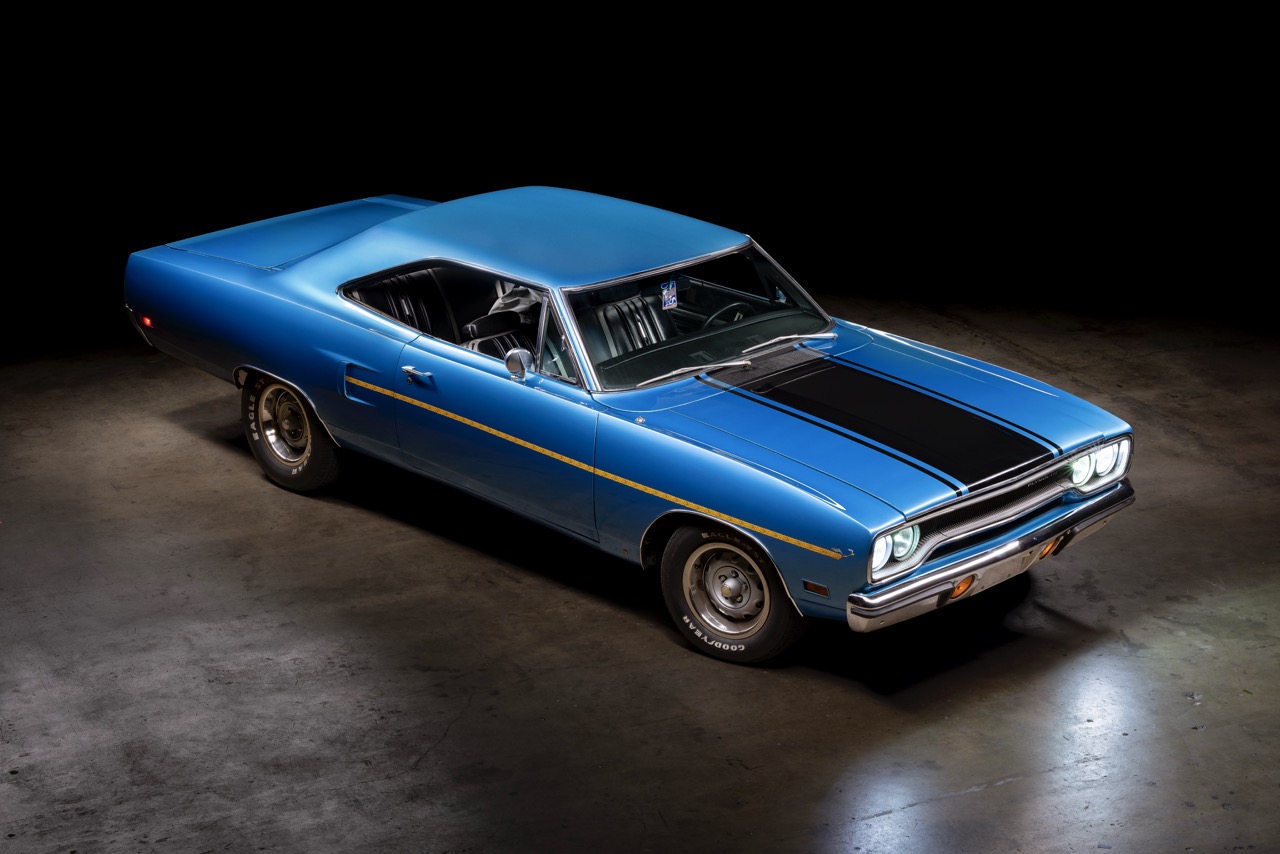The Last Performance Mustang – 1973 Mach 1

The early 70s were highly controversial for the Ford Mustang. Ford was criticized for making the thing too bloated and heavy. The company departed from the original pony car formula, which made the Mustang the legendary vehicle it is.
The late 60s saw the most vicious factory-built Mustangs for several decades ahead. Everybody wanted the lightweight, fast, and cheap car.
True, the Mustang had grown twice up to this point. But it’s reasonably acceptable to add extra weight if you also add more power and make the car faster overall.
And faster it had become!

In 1967, the car was enlarged to fit the 390 cubic-inch big block and make the Mustang GT. Around the same time, Carroll Shelby was installing the even larger 428 engine with 355 horsepower into the GT500 model.
The following year, Ford and Shelby both offered Mustangs with the 428 Cobra Jet and Super Cobra Jet engines with 335 advertised horsepower, but up to 435 in reality.

In 1969, the Mach 1 was created – a more comfortable, quieter, and livable performance car. Still, it could be ordered with 3 different big-block V8 engines – the 390, 428 Cobra Jet and Super Cobra Jet.
Also in 1969, two special homologation models were created. Тhe Boss 302 was developed for the Trans-Am Series. It lost the same year to the Camaro but dominated the 1970 Trans-Am season.

The Boss 429 was created to homologate the engine for racing. NASCAR never allowed the Mustang to participate because it’s not a full-size vehicle. However, the 429 V8 engine was used in a Torino Talladega to win 30 out of 54 races in the 1969 season.

Together with the Shelby GT350 and GT500, Ford offered 6 different production performance Mustangs available at the dealership for 1969.
Overall, the Mustang picked up an extra 600 lbs, but gained more than 100 horsepower and ran the quarter-mile 2 seconds faster, so all was good.
And it went downhill from there.
Trading performance for luxury
At the height of its performance prowess, Ford switched direction towards what they thought the public wanted – more comfort and luxury, less hardcore power.
Carroll Shelby departed in 1969, and the Shelby GT program was terminated. Some leftover cars were sold as 1970 models along with a few Boss 302 and 429 models which were generally one-time production runs. The Mustang GT was also canceled due to poor sales versus the Mach 1.
So, within two years, Ford went from having 6 performance Mustangs to only one. And of course, it was the luxury one – the Mach 1.

The Mustang received a major redesign for the 1971 model year. The car got new sheet metal and grew in almost every dimension.
Conceived at the height of the muscle car era, this move was supposed to allow installation of the 7.0-liter, 429 V8 engine, without extensive modification. And sure, the 1971 429-ci 4V Cobra Jet Ram Air engine generated up to 370 horsepower and 450 lb-ft of torque (rated), it was too late. The muscle car age was over and nobody wanted (to pay for) them anymore, so few were sold in 1971. The big-block Mustangs were discontinued at the end of the year.
And without oversized power, what remained of the Mustang was just an oversized shell that was slow and impractical. The external dimensions did not grow THAT MUCH. However, from the inside, the Mustang appeared significantly bloated.

The Sportback versions, including the Mach 1, featured huge buttresses that extended all the way to the rear bumper. While beautiful, the car limited the rear view of the driver, despite the enormous rear window. Car Life Magazine wrote at the time:
“A glance in the rearview mirror provides an excellent view of the interior with a small band of road visible.”
Looking forward wasn’t much better. The exceptionally large dashboard and long hood blocked a significant chunk of the road ahead. Some right-hand turns had to be taken in blind fate.

Lee Iacocca was later quoted:
“The Mustang market never left us, we left it.”
1973 Ford Mustang Mach 1
It’s big, it’s too heavy, underpowered and impractical. But as weird as it may seem, I think it looks awesome. It has curves!
Sure, the roof is only 14 degrees from horizontal but paired with these massive rear pillars, it forms a huge sweeping curve all the way from the front windshield to the rear bumper.

The combination of the sloping hood and urethane front bumper creates a streamlined front end. It looks like a fast car, even though it really wasn’t.
The top engine offered in the Mach 1 in 1972 was the 5.8-liter, 351 Cleveland V8, and it was not spared by the changing economy. The Cleveland lost nearly 70 horsepower between the 1971 Boss 351 version with 330 hp to the 1973 Q-code Cobra Jet with 265 hp.
When Road & Track tested the 1973 Mach 1, it ran the quarter-mile in 16.2 seconds. This was like back at the beginning only the Mustang was 1,100 lbs heavier, 8 inches longer and 4 inches wider than the original 1965 model.

Well, those were the days. Love it or hate it, The 1973 Mach 1 was the last performance Mustang of the first (and second) generation.
The following year, H.B. “Toby” Halicki immortalized the 1973 Mustang Sportback (actually a 1971) by giving it the main role in the 1974 movie Gone in Sixty Seconds.
Now, if you’re interested in what the Mach 1 could have been, you should read my story about Travis Newbold’s 1973 Mach 1 restomod. It’s vicious!
Recent Posts
-

Reegan Is Building This 1975 Dodge Ramcharger For One Lucky YouTube Subscriber
August 13, 2025Update 08/15/25: Reegan now has an all new aluminum radiator installed with dual electric fans. The Wilwood master cylinder is installed along with an EvansCNC…Read more -

Let's Turn a 1970 Plymouth Roadrunner into RestoMods Royalty
August 8, 2025Update: 8/8/2025 A little over a year ago we purchased a beautiful 1970 Plymouth Roadrunner from a local collector car dealership Bayside Auto. We knew…Read more -

The Ultimate 1968 Dodge Charger HELLCAT Build
August 8, 2025Update 8/8/25: Back in January of 2024, we purchased a 1968 Charger shell from Mopars 5150. They specialize in all things Mopar and had a…Read more
Become a Car Club Member
Car Club Members Get Entries to Win, Discounts in our Shop, Discounts with our Preferred Partners and more!
Membership benefits
By joining the RestoMods Car Club Today, you will receive amazing perks plus 15 bonus entries into our sweepstakes for every month you are an active member
-
Auto Discounts:Curated Discounts From Your Favorite Parts Companies
-
Restomods Monthly:Monthly Magazine With The Latest Industry News
-
Classified Ads:Get Free Postings seen by 300,000 enthusiasts monthly
-
Car Show Tickets:Check out the biggest vintage car shows on us.
-
Exclusive Car Deals:First chance to purchase any prize cars not selected






Restomods on Instagram
Follow us on Instagram and other networks












